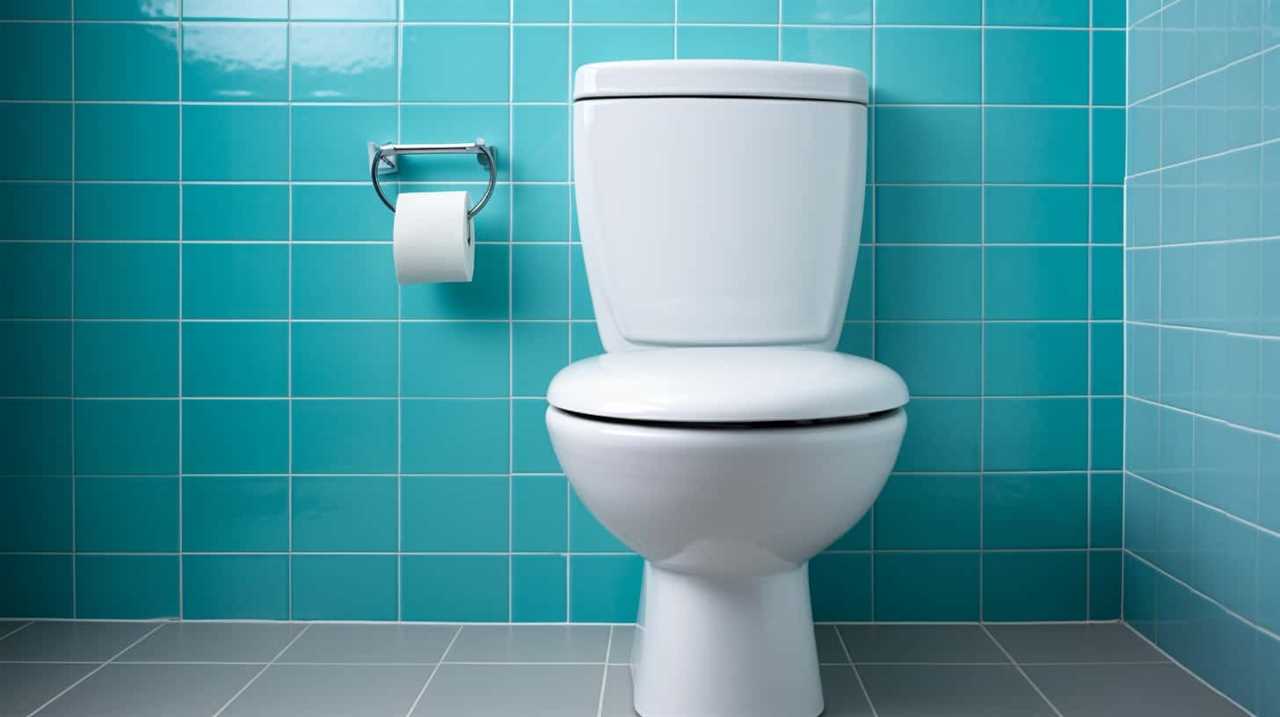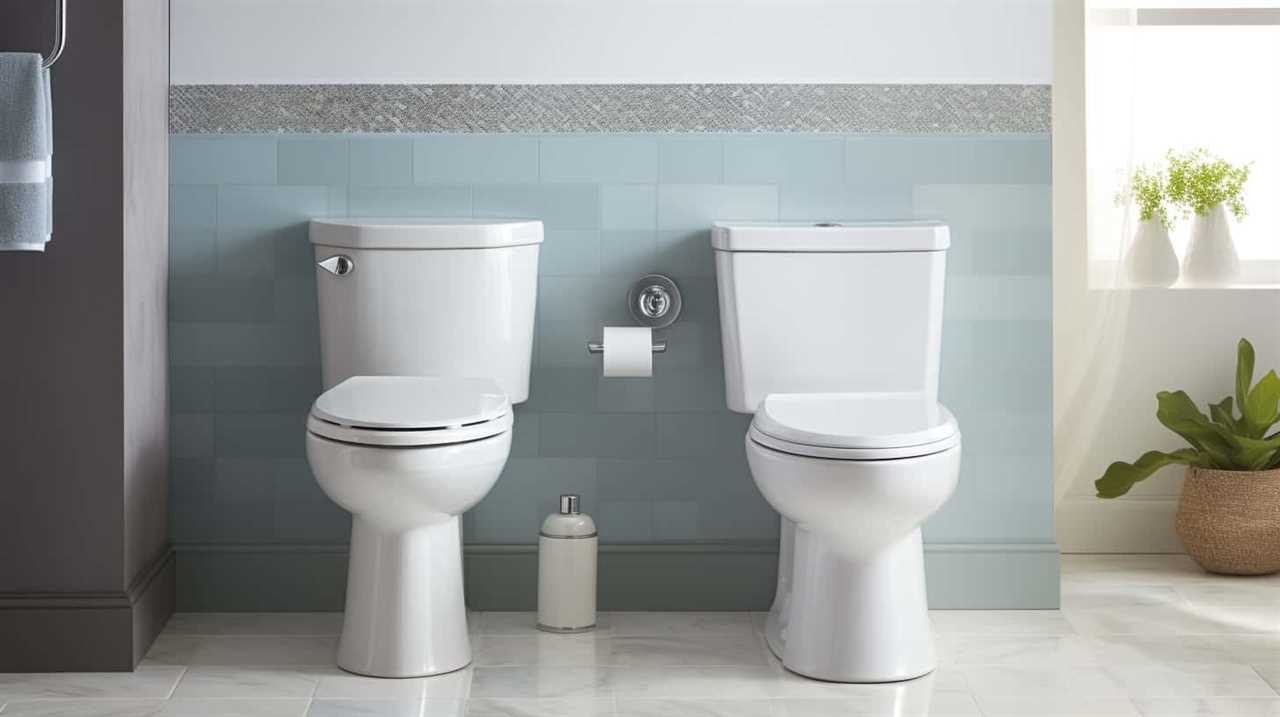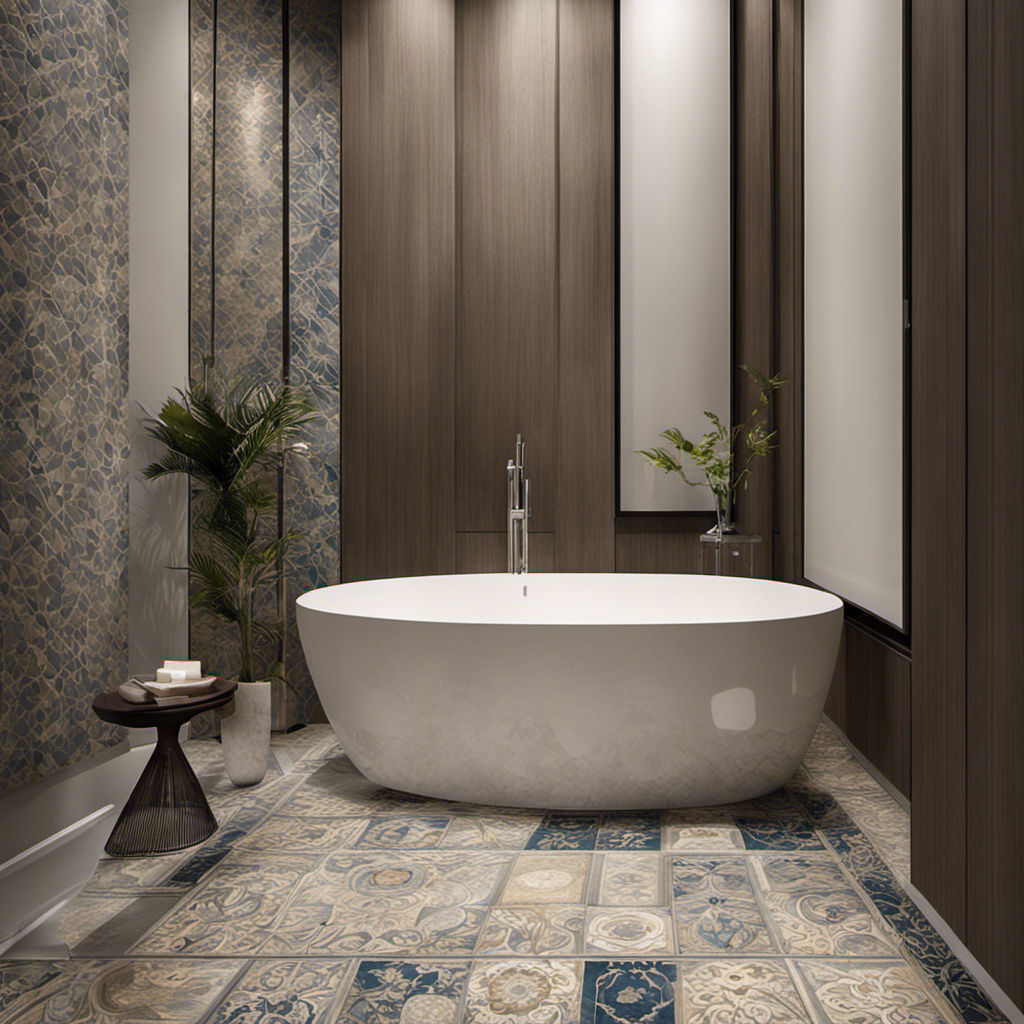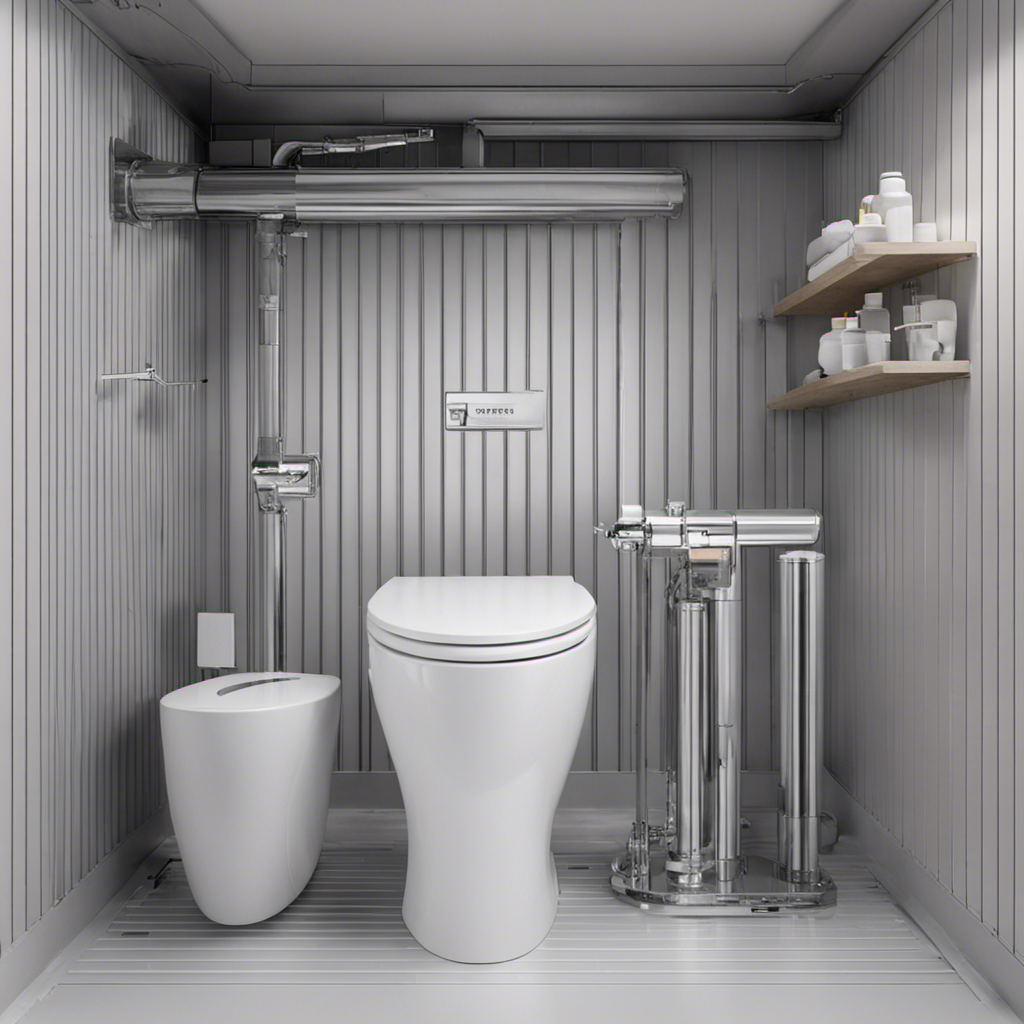Welcome to our educational piece on understanding what 1.28 GPF signifies for toilets. Similar to an expert plumber handling their tools, we’re here to demystify this technical subject for you.
In this guide, we’ll explain the definition of 1.28 GPF, why it matters, and the benefits it brings.
We’ll also explore how 1.28 GPF toilets save water and compare it to other flush rates.
By the end, you’ll be equipped with the knowledge to make an informed choice when selecting a water-efficient toilet.

Key Takeaways
- 1.28 GPF toilets use 1.28 gallons of water per flush, making them more water-efficient compared to older models.
- Implementing 1.28 GPF toilets can reduce water usage by more than half, contributing to water conservation efforts.
- Using 1.28 GPF toilets leads to cost savings on water bills due to lower water consumption.
- 1.28 GPF toilets have a positive environmental impact by reducing water waste and protecting freshwater sources.
The Definition of 1.28 GPF
When we refer to 1.28 GPF in a toilet, it means that the toilet uses 1.28 gallons of water per flush. This measurement is crucial in understanding the water efficiency of a toilet and plays a significant role in conserving water resources. The term GPF stands for gallons per flush, which indicates the amount of water that’s used each time the toilet is flushed.
The definition of 1.28 GPF is important because it signifies a substantial reduction in water consumption compared to older toilet models. Traditional toilets typically use around 3.5 to 7 gallons of water per flush, which is significantly higher than the 1.28 GPF standard. By implementing toilets with a 1.28 GPF rating, water usage can be reduced by more than half, leading to significant water savings over time.
The importance of 1.28 GPF goes beyond water conservation. It also contributes to lower utility bills by reducing water consumption. Additionally, it helps to minimize the strain on water treatment facilities and sewage systems, as less water is being flushed down the drain.
Understanding the definition of 1.28 GPF is the first step in recognizing why it matters. In the subsequent section, we’ll explore the reasons why 1.28 GPF toilets are crucial in today’s world and how they contribute to sustainability and environmental preservation.

Why 1.28 GPF Matters
When it comes to toilets, the 1.28 GPF measurement matters for two key reasons: water conservation and cost savings.
By using only 1.28 gallons of water per flush, toilets with this rating help conserve water resources, reducing overall water consumption.
Additionally, this lower water usage can lead to significant cost savings on water bills over time.
Water Conservation Benefits
Using 1.28 gallons per flush (GPF) in a toilet offers significant water conservation benefits for us. This water-saving technology has a positive environmental impact by reducing the amount of water consumed with each flush. Traditional toilets typically use around 3.5 to 5 GPF, meaning that they waste a substantial amount of water.

By adopting toilets with a 1.28 GPF, we can conserve water without compromising on performance. This reduction in water usage translates into significant savings over time, both for homeowners and municipalities. Not only does it help conserve our precious water resources, but it also reduces the strain on wastewater treatment plants.
Cost Savings Potential
To understand the cost savings potential of 1.28 GPF toilets, let’s consider the financial benefits they offer.
Here are four reasons why these toilets are cost-effective and have a positive environmental impact:
- Reduced water consumption: 1.28 GPF toilets use significantly less water per flush compared to older models, resulting in lower water bills.
- Efficient flushing technology: These toilets are designed with advanced flushing mechanisms that effectively remove waste using less water, ensuring optimal performance while reducing water waste.
- Rebate programs: Many water utilities offer rebates or incentives for upgrading to water-efficient toilets, providing an opportunity for homeowners to save even more money.
- Long-term savings: Over time, the cumulative savings from reduced water usage can add up significantly, making 1.28 GPF toilets a wise long-term investment.
The Benefits of 1.28 GPF
When it comes to toilets, opting for a 1.28 GPF model brings several benefits.

Firstly, it significantly contributes to water conservation efforts, reducing the amount of water used per flush.
Secondly, these toilets boast an efficient flushing system that effectively removes waste while using less water.
Lastly, the reduced water consumption translates into lower utility bills, making 1.28 GPF toilets a cost-effective and environmentally-friendly choice.
Water Conservation Benefits
With a water consumption rate of only 1.28 gallons per flush, we can significantly reduce our environmental impact. Here are four water conservation benefits of toilets with a 1.28 GPF:
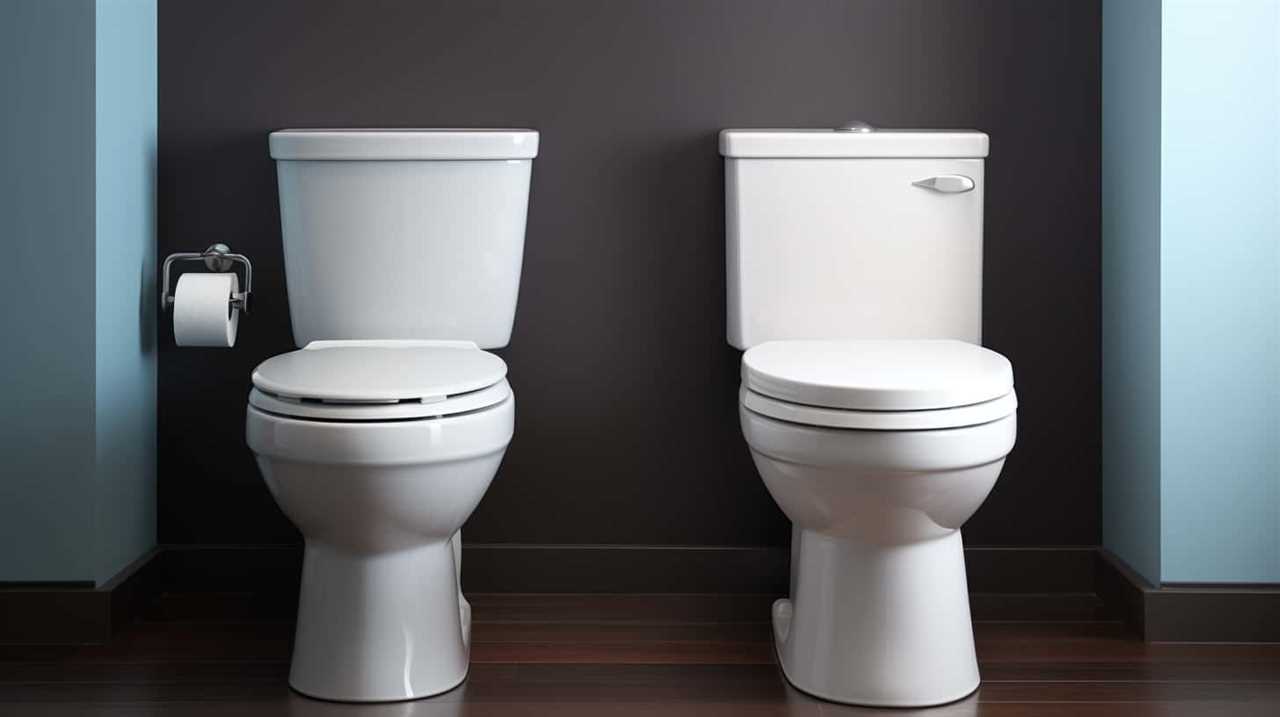
- Reduced water usage: By using less water per flush, we conserve this valuable resource and contribute to sustainable water management.
- Lower water bills: With toilets that have a 1.28 GPF, we can save money on our water bills since we’re using less water with each flush.
- Positive environmental impact: Water-saving technologies like toilets with a 1.28 GPF help protect our ecosystems by reducing the demand for freshwater sources and minimizing strain on water supplies.
- Eco-friendly choice: By opting for toilets with a 1.28 GPF, we actively participate in environmentally responsible practices and contribute to a greener future.
Efficient Flushing System
We can achieve an efficient flushing system by utilizing toilets with a 1.28 GPF, which results in significant water savings. The 1.28 GPF (gallons per flush) rating indicates that the toilet uses 1.28 gallons of water per flush. This is a significant improvement compared to older toilets that used 3.5 to 7 gallons per flush. By maximizing efficiency, toilets with a 1.28 GPF minimize water usage while still providing effective flushing power.
To better understand the benefits of a 1.28 GPF toilet, let’s compare it to a traditional 3.5 GPF toilet in terms of water consumption and environmental impact:
| Metric | 1.28 GPF Toilet | 3.5 GPF Toilet |
|---|---|---|
| Water Consumption | 1.28 gallons | 3.5 gallons |
| Annual Water Usage | 4,672 gallons | 12,775 gallons |
| Water Savings | – | 8,103 gallons |
| Environmental Impact | Lower | Higher |
As the table shows, a 1.28 GPF toilet can save up to 8,103 gallons of water annually compared to a 3.5 GPF toilet. This significant reduction in water usage not only helps conserve water resources but also reduces the environmental impact associated with water consumption. By choosing toilets with a 1.28 GPF, we can contribute to a more sustainable future while still enjoying the convenience and functionality of a modern flushing system.
Reduced Utility Bills
To continue our discussion on the benefits of 1.28 GPF toilets, let’s explore how they can lead to reduced utility bills with their efficient water usage. Here are four reasons why investing in a 1.28 GPF toilet can help you save money:

- Reduced water usage: Compared to older toilets that use 3.5 to 5 gallons per flush (GPF), 1.28 GPF toilets use significantly less water. By using less water with each flush, you can see a noticeable reduction in your water bill.
- Lower environmental impact: With reduced water usage, 1.28 GPF toilets contribute to conservation efforts by minimizing freshwater consumption. By choosing these toilets, you can play a part in preserving this vital resource.
- Water-efficient design: 1.28 GPF toilets are engineered to maximize flushing power while minimizing water usage. They utilize advanced flushing technology, such as dual flush mechanisms or pressure-assisted systems, to ensure effective waste removal with less water.
- Incentives and rebates: Many utility companies and local governments offer incentives and rebates for installing water-efficient fixtures, including 1.28 GPF toilets. Taking advantage of these programs can help offset the initial cost of upgrading your toilet and further reduce your utility bills.
How 1.28 GPF Saves Water
1.28 GPF toilets significantly reduce water consumption. These toilets are designed to use only 1.28 gallons of water per flush, compared to older models that can use up to 3.5 gallons or more. This water-saving strategy has a significant environmental impact, as it helps conserve one of our most precious resources.
To better understand the water-saving benefits of 1.28 GPF toilets, let’s compare them to older models in a table:
| Water Usage per Flush | 1.28 GPF Toilet | Older Toilet |
|---|---|---|
| Gallons of Water | 1.28 | 3.5 or more |
As you can see, 1.28 GPF toilets use significantly less water per flush compared to older toilets. This reduction in water usage not only helps conserve water but also reduces the strain on our water supply and wastewater treatment systems. Additionally, it contributes to lowering water bills for homeowners and businesses.
Understanding the water efficiency ratings of toilets is essential in making informed decisions about water conservation. In the next section, we will delve into the different water efficiency ratings and their implications for water-saving efforts.
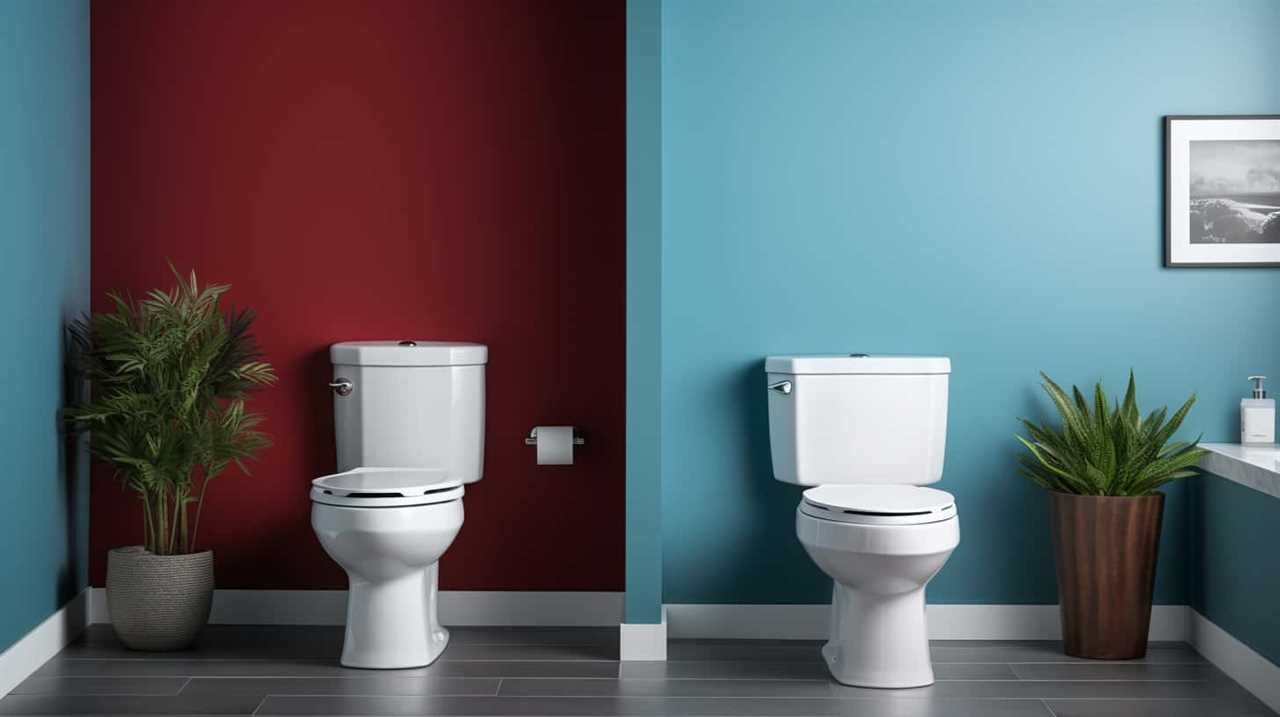
Understanding Water Efficiency Ratings
Moving on to the topic of water efficiency ratings, let’s explore the different ways in which toilets are rated for their water-saving abilities. Understanding these ratings is essential in selecting a toilet that minimizes water usage and reduces environmental impact. Here are four key aspects to consider:
- Gallons per flush (GPF): This rating measures the amount of water used by a toilet per flush. The lower the GPF, the more water-efficient the toilet is. Toilets with a 1.28 GPF rating, for example, use 20% less water compared to older models with a 1.6 GPF rating.
- Dual-flush technology: Some toilets come with dual-flush functionality, offering two different flushing options. A partial flush for liquid waste uses less water, while a full flush for solid waste uses more water. This technology allows for even greater water savings.
- Pressure-assisted flushing: This water-saving technology uses pressurized air to force water into the bowl, resulting in a more powerful flush that requires less water. This mechanism ensures efficient waste removal while minimizing water usage.
- WaterSense certification: Toilets that meet the strict water efficiency criteria set by the Environmental Protection Agency (EPA) are awarded the WaterSense label. These toilets use at least 20% less water than standard models, without sacrificing performance.
Comparing 1.28 GPF With Other Toilet Flush Rates
When comparing the water efficiency of toilets, it’s important to consider the flush rates of different models, including the 1.28 GPF rating. Toilet flush rates refer to the amount of water used during each flush. The 1.28 GPF rating means that the toilet uses 1.28 gallons of water per flush.
To understand how this compares to other flush rates, it’s helpful to consider the history of toilet water usage. Traditional toilets used to have flush rates as high as 3.5 gallons per flush (GPF). However, with advancements in technology and a growing focus on water conservation, newer models now offer lower flush rates. The 1.28 GPF rating is considered highly efficient, as it uses significantly less water compared to older toilets.
In comparison to other flush rates, a 1.28 GPF toilet is more water-efficient than toilets with higher flush rates. For instance, toilets with 1.6 GPF use slightly more water per flush, while older models with 3.5 GPF use significantly more. By choosing a 1.28 GPF toilet, you can save water and reduce your environmental impact without sacrificing performance.

Factors to Consider When Choosing a Toilet With 1.28 GPF
To make an informed decision when selecting a toilet with a 1.28 GPF rating, there are several key factors to consider. Here are four important considerations for maximizing water savings:
- Efficiency: Look for toilets that are WaterSense certified. These toilets have been independently tested and proven to meet EPA standards for efficiency and performance. WaterSense toilets use 20% less water than the current federal standard of 1.6 GPF, while still providing effective flushing power.
- Design: Consider the toilet’s bowl shape, trapway size, and flush valve design. A larger trapway and a larger flush valve can help increase flushing power, allowing for effective waste removal with less water. Additionally, a well-designed bowl shape can enhance the flushing action, reducing the need for multiple flushes.
- Dual Flush Option: Some toilets with a 1.28 GPF rating offer a dual flush feature, allowing you to choose between a full flush and a half flush. The half flush uses less water and is suitable for liquid waste, while the full flush is more powerful for solid waste. This option can further maximize water savings by giving you control over the flush volume.
- Quality: Consider the quality and reputation of the toilet manufacturer. Look for brands with a track record of producing reliable and long-lasting toilets. Investing in a high-quality toilet ensures that it will continue to perform efficiently for years to come, reducing the need for repairs or replacement.
Tips for Maximizing Water Savings With 1.28 GPF Toilets
Now, let’s delve into some practical tips for maximizing water savings with 1.28 GPF toilets. These toilets are designed to use less water per flush, and by following a few simple strategies, you can further maximize their efficiency.
Firstly, consider installing a dual flush system. This allows you to choose between a partial flush for liquid waste or a full flush for solid waste, reducing water usage accordingly.
Another tip is to check for any leaks regularly. Even a small leak can waste a significant amount of water over time, so it’s important to fix any leaks promptly.

Additionally, adjusting the water level in the toilet tank can help save water. Most toilets have an adjustable float or fill valve that controls the water level. By lowering the water level slightly, you can still ensure proper flushing while minimizing water usage.
Using toilet tank inserts, such as displacement bags or bottles, can also help reduce water consumption. These inserts take up space in the tank, reducing the amount of water needed for each flush. However, be sure to check the manufacturer’s guidelines to ensure compatibility with your toilet model.
Lastly, practicing water-saving habits like flushing only when necessary and avoiding using the toilet as a waste basket can further maximize efficiency.
Frequently Asked Questions
How Do I Calculate the Water Savings With a 1.28 GPF Toilet Compared to a Standard Toilet?
To calculate water savings with a 1.28 gpf toilet compared to a standard toilet, we need to consider water consumption. By using a 1.28 gpf toilet, you can save a significant amount of water per flush.

This reduction in water usage not only leads to lower water bills but also has a positive environmental impact by conserving water resources.
Calculating the specific water savings will depend on the number of flushes and the difference in gpf between the two toilets.
Can I Retrofit My Existing Toilet to Use 1.28 Gpf?
When it comes to retrofitting options for toilets, there are several factors to consider.
One of the main considerations is the cost. Retrofitting an existing toilet to use 1.28 gpf can be a cost-effective solution, as it reduces water usage without the need for a complete replacement.

However, it’s important to note that the retrofitting process may vary depending on the specific toilet model.
Consulting a professional plumber can provide further guidance on the best options for your particular situation.
Are There Any Drawbacks or Disadvantages to Using a 1.28 GPF Toilet?
There may be some disadvantages or drawbacks to using a 1.28 gpf toilet. One possible drawback is that the lower water volume may not always effectively remove waste, leading to potential clogs or the need for multiple flushes.
Additionally, some users may find that the reduced water flow doesn’t provide enough force to thoroughly clean the bowl.

However, advancements in technology have helped to minimize these drawbacks, and many 1.28 gpf toilets now offer improved performance.
Are There Any Rebates or Incentives Available for Installing a 1.28 GPF Toilet?
There are rebates and incentives available for installing a 1.28 gpf toilet. These incentives vary depending on your location and local water conservation programs. Rebates can help offset the cost of purchasing and installing a water-efficient toilet, making it a more affordable option.
Additionally, some utility companies offer incentives for water conservation, including rebates for upgrading to a 1.28 gpf toilet. It’s worth checking with your local water utility or government agency to see what incentives are available in your area.
Are There Specific Brands or Models of Toilets That Are Known for Their Water Efficiency With a 1.28 GPF Rating?
When it comes to specific toilet brands known for their water efficiency with a 1.28 gpf rating, there are several options available in the market.
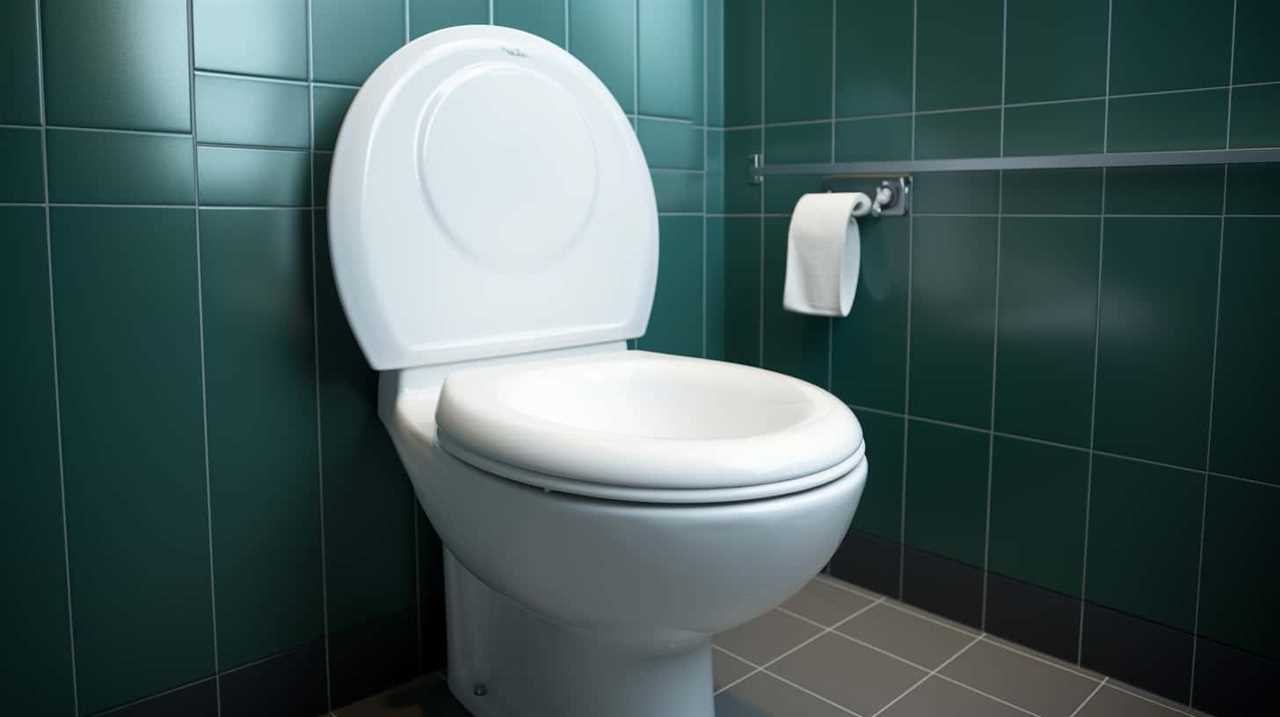
These brands prioritize water conservation without compromising on performance.
Some popular choices include Kohler, American Standard, and Toto.
These brands offer a range of models that meet the 1.28 gpf standard, ensuring that you can find a toilet that suits your needs while also being environmentally friendly.
Conclusion
In conclusion, 1.28 GPF toilets offer impressive water-saving benefits. Their efficient flush rate helps conserve water without compromising performance.

Understanding water efficiency ratings and comparing flush rates can guide you in selecting the right toilet for your needs. Consider factors such as design, functionality, and water-saving tips to maximize your savings.
By choosing a 1.28 GPF toilet, you can contribute to water conservation efforts while enjoying the convenience and reliability of a modern plumbing fixture.



